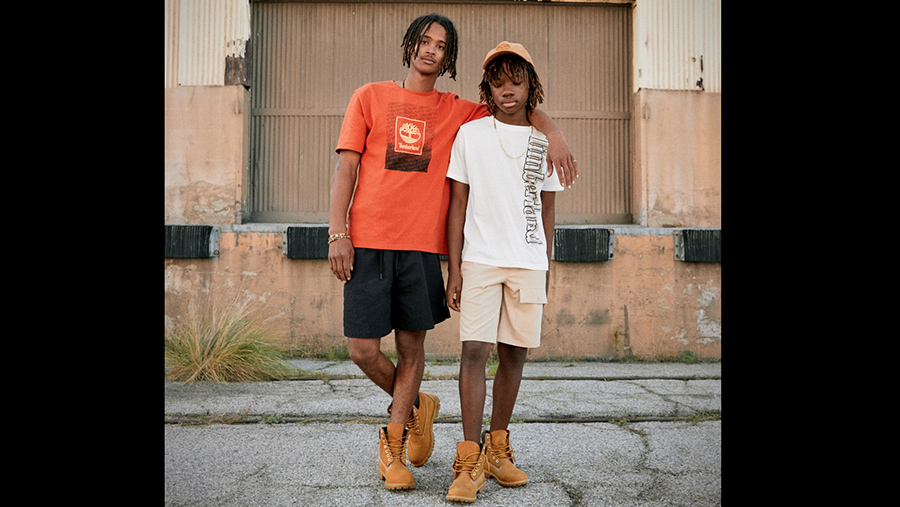S&P Global Ratings revised its debt ratings outlook on VF Corp. to negative from stable. The rating agency estimated VF will likely have to increase debt by more than $845 million to pay the assessed tax to appeal an unfavorable decision from the U.S. Tax Court regarding its post-acquisition restructuring of Timberland Co. in September 2011.
S&P said, “The Tax Court decision states that the full value of the Timberland intellectual property (IP) should have been taxable upon the date of transfer to Switzerland and not annually as VF has paid.”
S&P said VF intends to appeal this outcome and if the decision is reversed, the company would receive a refund of the assessed tax along with accrued interest.”
S&P wrote in its analysis, “The negative outlook reflects the company’s higher-than-anticipated leverage for the next two years because it will likely take on debt to pay the tax assessment related to the tax decision it is appealing. This increased debt burden may limit VF’sfinancial flexibility as challenging macroeconomic conditions continue to develop. VF Corp. ended fiscal year 2022 (ended March) with 2.4x leverage, just inside our 2.6x prior forecast. However, we expect leverage to increase to about 2.9x before the end of the calendar year 2022, driven by debt incurred in connection with the unfavorable Tax Court decision which the company is currently appealing. We previously expected leverage to fall to the 2.2x area at the end of the fiscal year ending March 2023. The company has been on a leverage-reduction path since its late 2020 acquisition of Supreme for approximately $2.1 billion, which took leverage above 4x, in combination with pandemic-related fallout, and resulted in a downgrade to ‘A-‘. We believe there is risk the company could continue to pursue acquisitions, given its capital allocation priorities, which would keep leverage elevated over a longer period. The company has a balance sheet liquidity of $1.3 billion in cash at year-end and about $1.9 billion of revolver capacity that it can also use to pay the assessment but both would result in an increase in our leverage calculation, which is on a net cash basis. The company has a refinancing event in fiscal 2024 when its 0.625 percent, $938.4 million, of notes become due. At this time, VF has not indicated its intentions on how it will address this maturity. Additionally, the tax payment will lower cash flow from operations in fiscal 2023, leading to negative free operating cash flow, which we expect to normalize in fiscal 2024.
“The Tax Court appeal process could take more than 18 months; however, the company is confident in its treatment of the Timberland IP. The company currently owes $845 million in taxes and accrued interest from the underpayment. We believe the company will likely take on debt to pay the entire assessment so that interest does not continue to accrue as they go through the appeal process. If VF wins the appeal, they will get a refund of the assessed tax plus any interest accrued.
“Supreme is mostly in line with its acquisition plan but has faced steep costs from supply chain issues. Supreme is a popular streetwear brand with high margins and good cash flow generation, but revenue can be volatile. Supreme is one of the most well-known streetwear brands globally, blending skate-influenced origins with luxury fashion. Its business model involves releasing limited quantities of new items in weekly drops, which spurs consumer enthusiasm and sales. Recently this model faced challenges related to supply and the company incurred elevated freight costs to get product in for specific drops. The situation caused the brand some gross margin erosion but the brand was still able to perform in line with VF’s acquisition targets. We believe there is uncertainty about Supreme’s ability to maintain sales growth near the rapid pace of the past few years. The model relies on exclusivity and scarcity, so increasing distribution without diluting the brand will likely be an ongoing challenge. We expect periods of good sales growth because Supreme has a large base of devoted customers and tailwinds from streetwear’s popularity. However, revenue and profitability could be relatively volatile over time, depending on the brand’s popularity.
“Brand leader changes at Vans aim to grow the brand, execution is key. Vans, as the company’s largest brand, is very important and management has publicly expressed its disappointment with its growth, despite record revenue in 2022 from the pandemic recovery dynamics. Kevin Bailey, who has been with the company since 2002, has returned to his former role as Global Brand President with the task of restoring Vans’ core classic footwear, as well as its business in China, to more competitive growth. Both areas were hurt by factory closures due to COVID-19 outbreaks and China’s zero COVID policy, which resulted in greater restrictions. Mr. Bailey will focus on brand support of its classic shoe product, re-think how the brand does collaborations, and become more regional when it comes to product assortment and how it distributes products. He will also seek to diversify its customers in China outside of Tmall (China’s largest online seller). Mr. Bailey, has a good track record—he grew the brand from $800 million to $2.3 billion—but given the competitive landscape and uncertainty created by the pandemic, results have been transient.
“VF’s portfolio of brands is positioned to grow amid casual, outdoor, and active trends. VF performed well in fiscal 2022, returning sales to pre-pandemic levels with gross and EBITDA margins exceeding 2019 results. This strength stemmed from apparel companies being able to sell at full price points, and continuing to raise prices to offset inflation, supported by limited inventory and pent-up demand from the onset of the pandemic. The company generated $527 million of free operating cash flow this past year, which is below our prior forecast of $600 million-$700 million. This is because the company had to spend more on building inventory than we previously anticipated. We believe inventory management will continue to be key as we are starting to see shifts in consumer sentiment and spending patterns as pandemic tailwinds subside. We believe there will be a return to more promotional pricing, which will impact margins for most apparel issuers.
“VF’s big four brands—Vans, The North Face, Timberland, and Dickies—all compete in categories that are on-trend and growing. We forecast high-single-digit growth for the outdoor segment, mid-single-digit growth for the active segment (which includes Supreme), and mid-single-digit growth for the work segment over the next several years. The skater brand has introduced new products and used the drop model and collaborations to fuel brand growth. The North Face brand now exceeds pre-pandemic levels because outdoor activities, including hiking, are perceived as safer activities with wellness attributes. The brand is growing in non-outerwear product categories as it continues to expand. Timberland is also back to pre-pandemic levels and is also benefiting from outdoor trends in the U.S. while Asia Pacific’s performance has been hurt by COVID-19 disruptions. Dickies is growing in all regions benefitted by its positioning as a work lifestyle brand and has recently launched a premium product offering.
“The negative outlook reflects that we could lower the ratings on VF Corp. if leverage does not return to the low-2x area in the next two years.”
In reporting its fiscal fourth-quarter results on May 19, VF provided the following update on the tax dispute in connection with the Timberland acquisition, “As previously reported, VF petitioned the U.S. Tax Court (the Court) to resolve an Internal Revenue Service (IRS) dispute regarding the timing of income inclusion associated with VF’s acquisition of The Timberland Company in September 2011. While the IRS argues that all such income should have been immediately included in 2011, VF has reported periodic income inclusions in subsequent tax years. Both parties moved for summary judgment on the issue, and on January 31, 2022, the Court issued its opinion in favor of the IRS. VF believes the opinion of the Court was in error based on the technical merits and intends to appeal; however, VF will be required to pay the 2011 taxes and interest being disputed or post a surety bond. It is anticipated that during fiscal 2023, the IRS will assess, and VF will pay, the 2011 taxes and interest, which would be recorded as a tax receivable based on VF’s expected probability of a successful appeal. The gross amount of taxes and interest as of April 2, 2022 was estimated at approximately $845 million and will continue to accrue interest until paid. VF continues to remain confident in its timing and treatment of the income inclusion and VF is vigorously defending its position. However, should the Court opinion ultimately be upheld on appeal, this tax receivable may not be collected by VF. If the Court opinion is upheld, VF should be entitled to a refund of taxes paid on the periodic inclusions that VF has reported. However, any such refund could be substantially reduced by potential indirect tax effects resulting from the application of the Court opinion. Deferred tax liabilities, representing VF’s future tax on annual inclusions, would also be released. The net impact to tax expense estimated as of April 2, 2022 could be up to $700 million.”
Photo courtesy VF Corp./Timberland
















